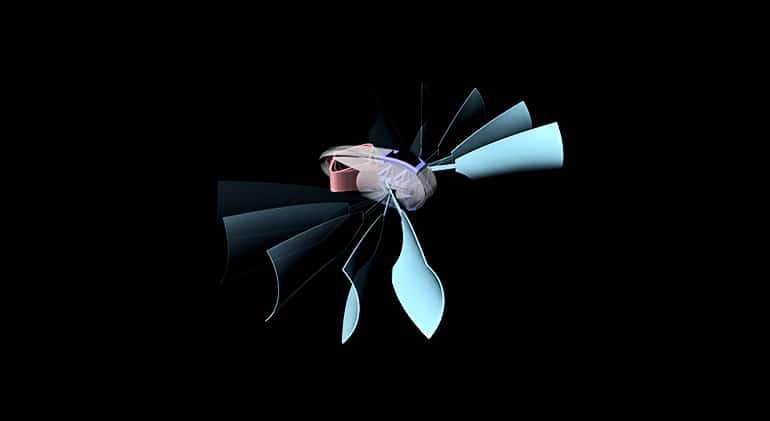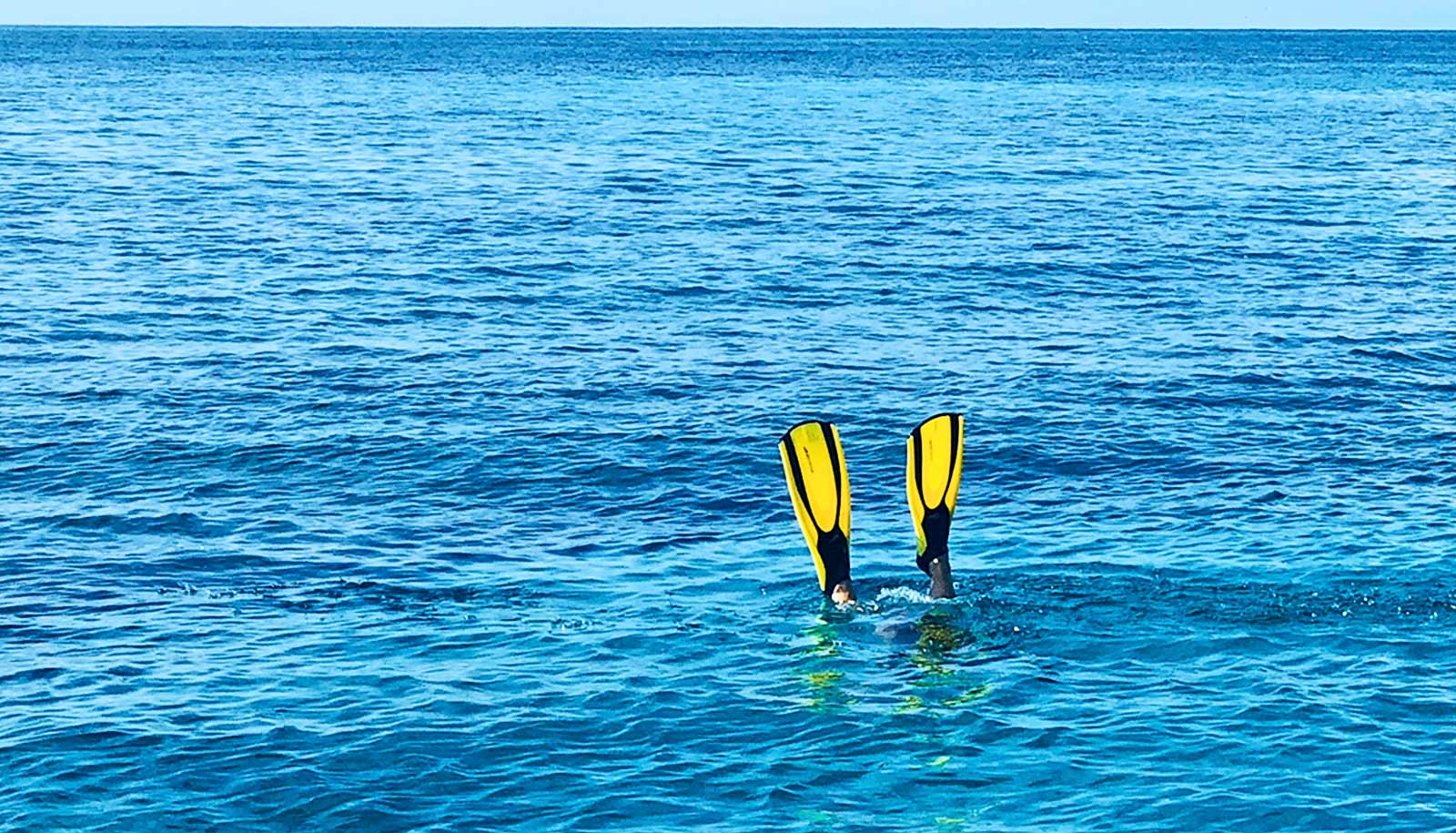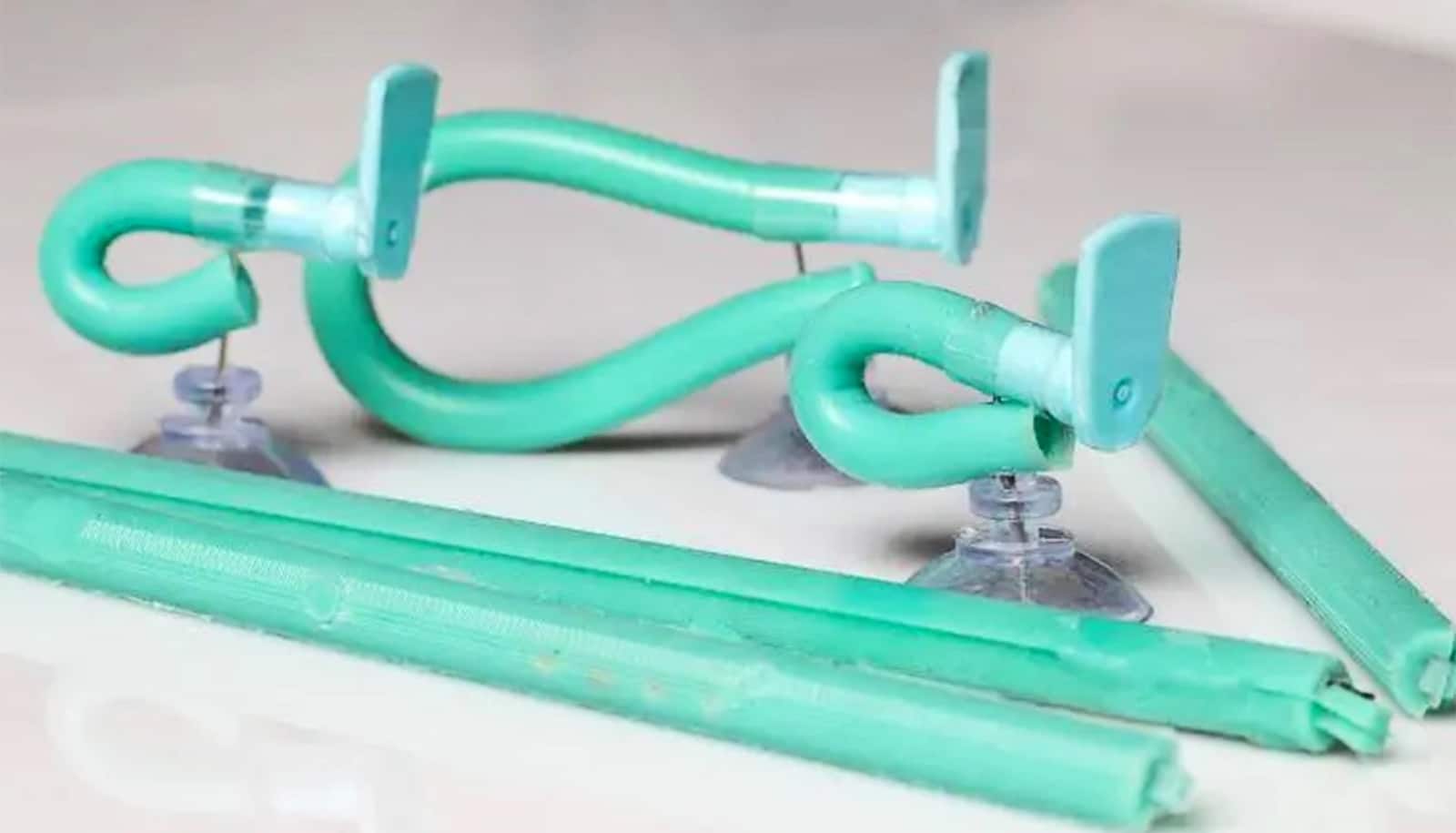Researchers have developed a new propulsion concept for swimming robots. The robot exploits temperature fluctuations in the water for propulsion without the need for an engine, propellant, or power supply.
As a proof-of-concept study, the researchers developed a 7.5-centimeter (a bit less thant three inches) mini-submarine equipped with paddles, which they fabricated entirely using a multi-material 3D printer. A paper describing the work appears in the journal PNAS.
The paddles work using a bistable propulsion element, which two shape memory polymer strips activate. Kristina Shea of ETH Zurich and doctoral student Tim Chen developed the shape memory polymer strips.
Designed to expand in warm water, the polymer strips power the robot by acting like “muscles.” If the water in which the mini-submarine floats is heated, the expansion of the “muscles” causes the bistable element to quickly snap, triggering a paddle stroke. The directional motion, force, and timing of the paddle strokes are precisely defined by the robot’s geometry and material.

At present, each actuating element can execute a single paddle stroke before researchers must then reprogram it manually. However, as the scientists point out, it’s possible to fabricate complex swimming robots with multiple actuators.
The scientists have already made a mini-submarine that can paddle forward with one stroke, release its “cargo” (a coin), and then navigate back to the starting point with a second paddle stroke in the opposite direction, all by sensing changes in temperature of the water.
Varying the geometry of the polymer muscles allowed the scientists to define the sequence of paddle strokes. Thin polymer strips heat up faster in warm water and therefore respond faster than thicker ones.
Magnetic field lets tiny ball robots swim ‘breaststroke’
“The main takeaway from our work is that we have developed a new and promising means of propulsion that is fully 3D printed, tuneable, and works without an external power source,” says Shea.
Researchers hope to develop the submarine’s propulsion system further to create a low-power vessel for exploring ocean depths.
Researchers from the California Institute of Technology also contributed to the work.
Source: ETH Zurich



